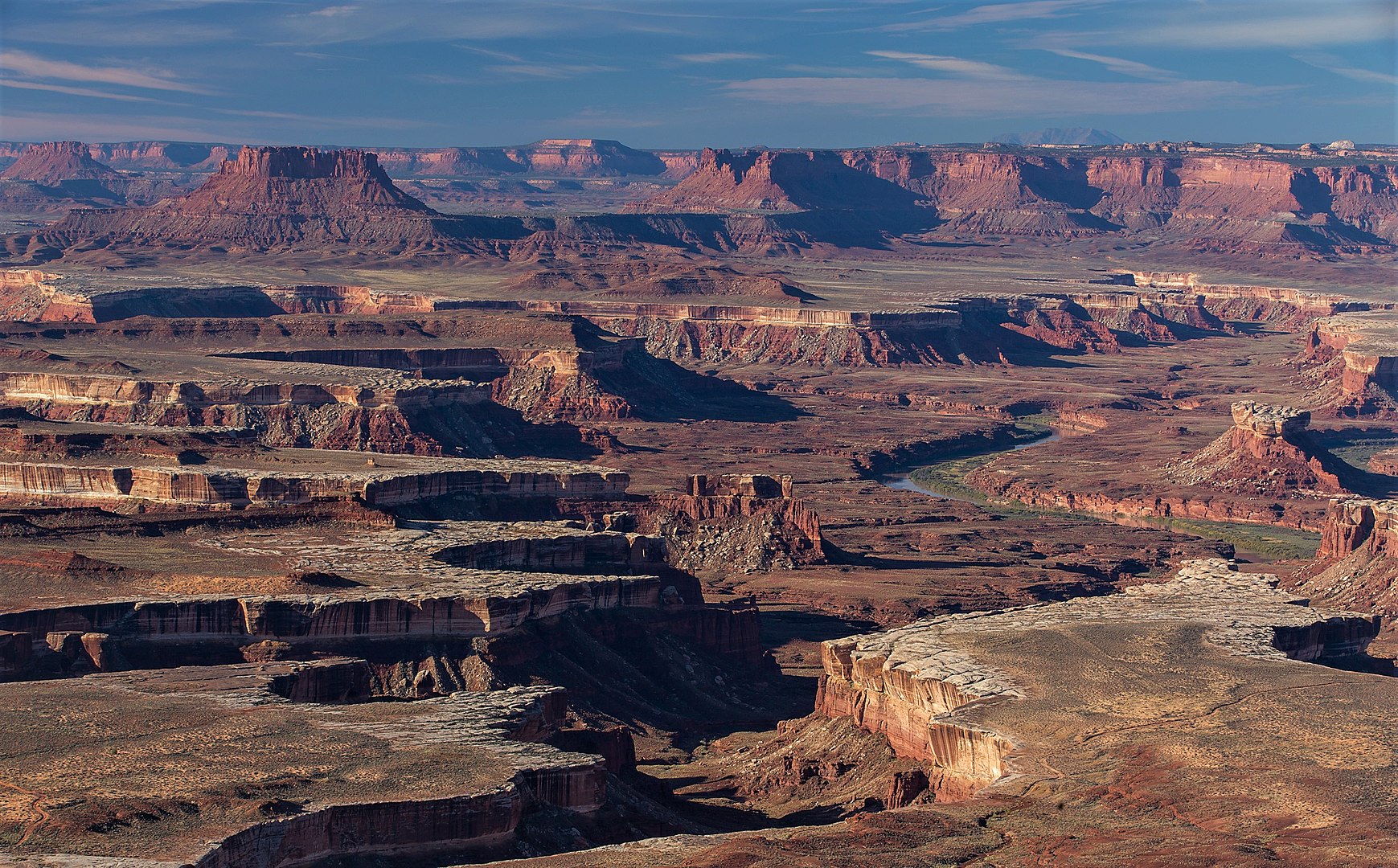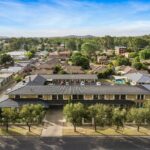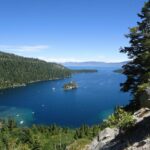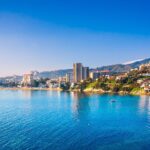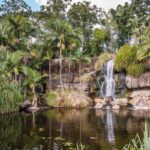Quick Bits:
Canyonlands National Park stands as a testament to the enduring power of nature. Located in southeastern Utah, it spans more than 330,000 acres of rugged desert wilderness. Time and the elements shaped its dramatic mesas, deep canyons, ancient rock formations, and wide-open skies.
This land belongs to red rock country. It shares its surroundings with Arches National Park, Dead Horse Point State Park, and the greater Colorado Plateau. It draws hikers, explorers, photographers, and anyone seeking solitude beneath vast skies and rising stone walls.
Canyonlands is wild, untamed, and inspiring.
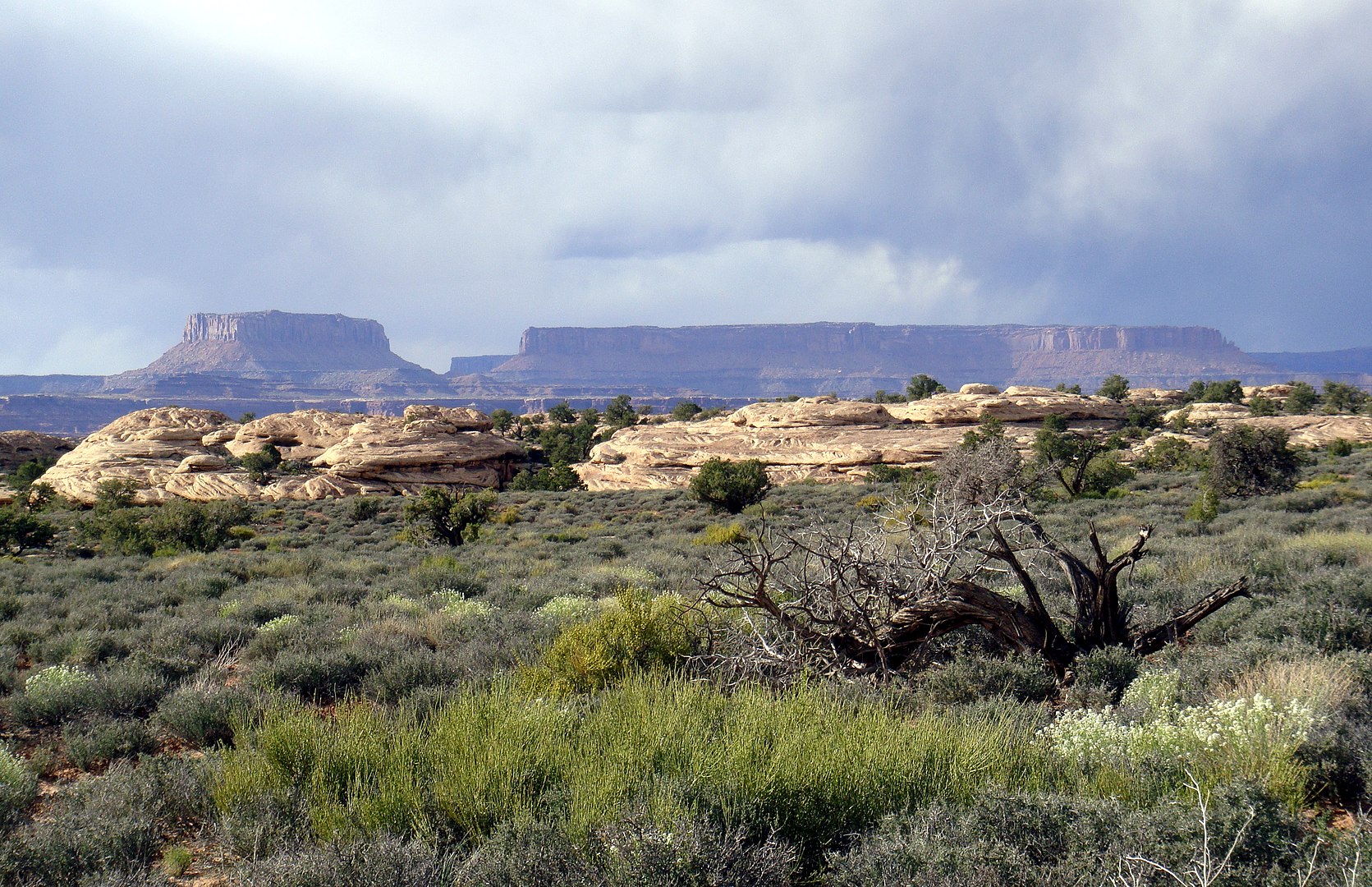
Key Highlights
- Four distinct districts offer diverse experiences. Each one feels like a separate park.
-
Island in the Sky sits high atop a mesa with panoramic views stretching over 100 miles.
-
The Needles features colorful spires and backcountry trails.
-
The Maze is remote, isolated, and one of the most rugged places in the country.
-
The Colorado and Green Rivers carve through it all, offering rafting and kayaking adventures.
-
The park is a stargazing haven, with minimal light pollution and vast night skies.
-
Petroglyphs and ruins reveal traces of ancient Native American life.
General Information
Canyonlands became a national park in 1964. The goal was to preserve the striking landscape, the rich cultural history, and the recreational opportunities the area offers.
It is managed by the National Park Service and draws about 800,000 visitors each year. Despite that number, its vastness means you often find peace and quiet in many parts of the park.
There are no major roads connecting the districts inside the park. Travel between districts requires planning, sometimes with hours of driving between them. The park’s remoteness makes it feel more personal, more wild, and more genuine.
Services are limited. Cell signal disappears often. Food, water, and fuel are not sold within the park. Visitors must plan ahead and come prepared.
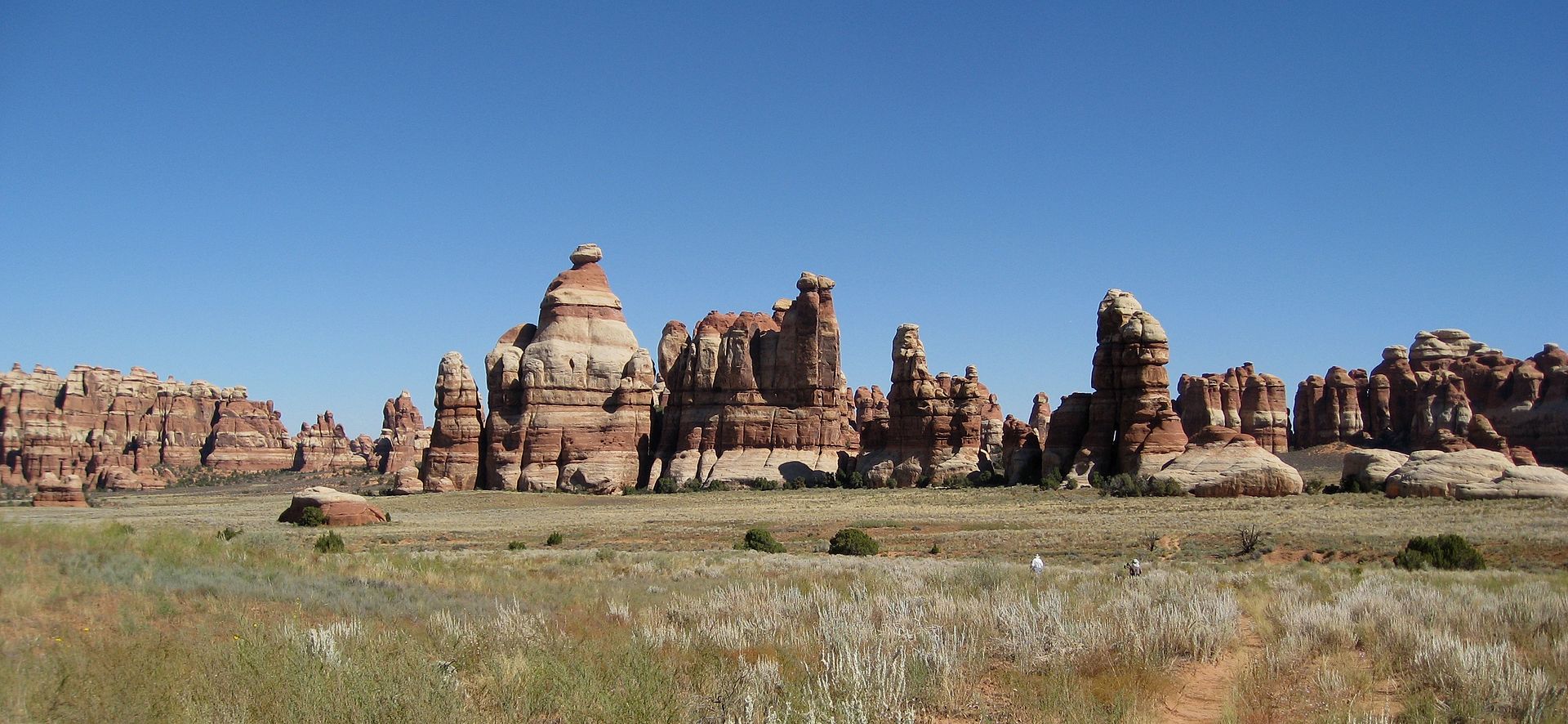
Geography Information
Canyonlands National Park sits at the heart of the Colorado Plateau. This high desert landscape is defined by layers of sedimentary rock shaped by water, wind, and time.
-
Elevation: Ranges from about 3,700 feet to over 7,000 feet.
-
Geology: Sandstone layers exposed by erosion form buttes, arches, spires, fins, and canyons.
-
Water: Though rare in the desert, the Colorado and Green Rivers are lifelines. They created the canyons that define the park.
-
Rock Formations: Expect dramatic contrasts of red rock, white sandstone, and black desert varnish.
This is the land of wide-open vistas, hidden arches, and raw, rocky wilderness. Even small hikes deliver massive views.
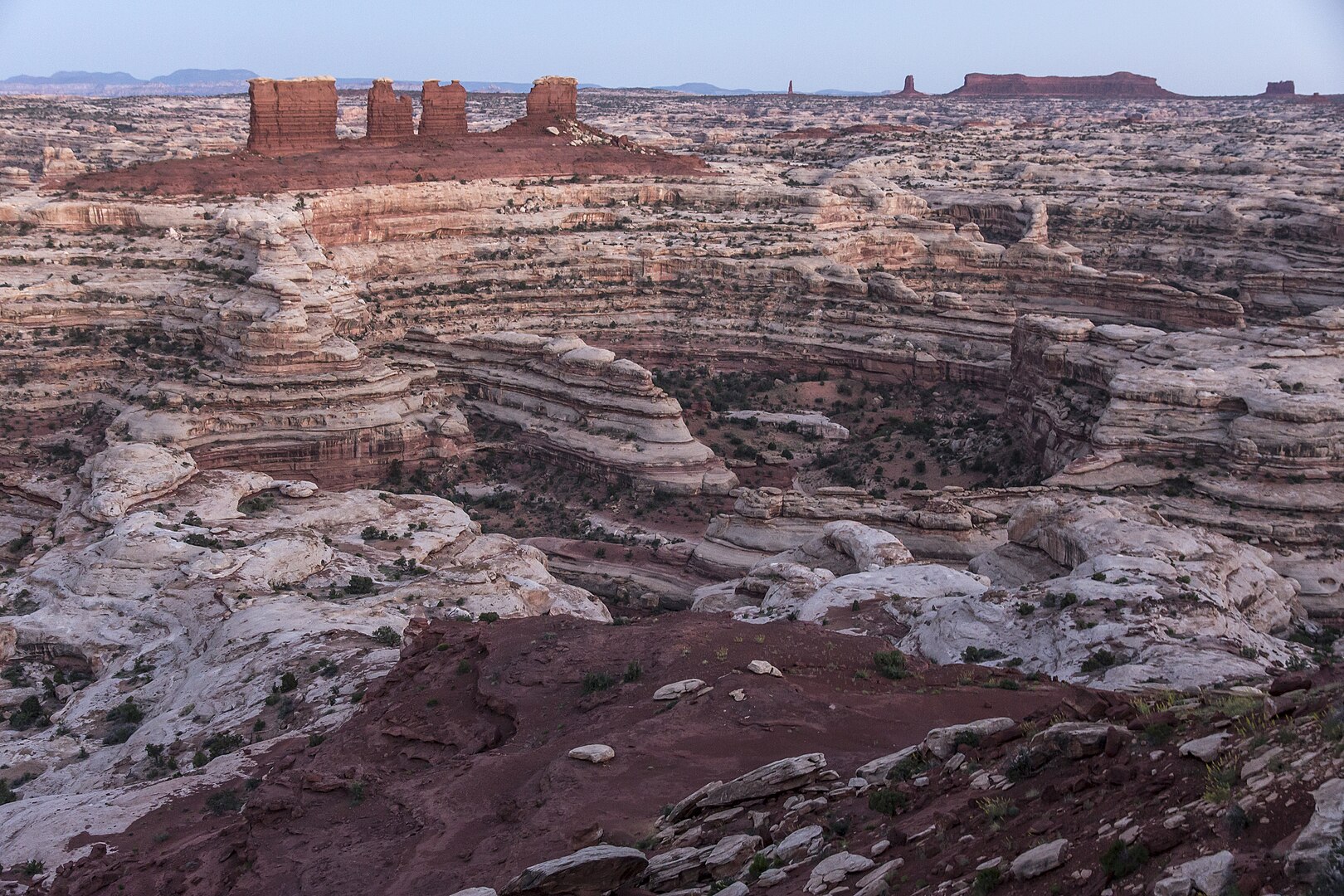
Places to Visit
Island in the Sky
-
Easiest to access from Moab
-
Features dramatic overlooks such as Grand View Point and Mesa Arch
-
Popular hikes: Mesa Arch Trail, Upheaval Dome, Aztec Butte
-
Paved roads and developed viewpoints
The Needles
-
South of the town of Monticello
-
Home to colorful rock spires, slot canyons, and ancient ruins
-
Popular hikes: Chesler Park Loop, Druid Arch, Joint Trail
-
Requires more time and effort to explore
The Maze
-
Remote and rugged
-
Requires four-wheel drive, topographic maps, and preparation
-
Suitable for experienced backpackers and off-road adventurers
-
Highlights: The Doll House, Land of Standing Rocks
The Rivers
-
The Green and Colorado Rivers converge in the park
-
Offer calm-water rafting, white-water trips, and kayaking
-
Permits needed for overnight river trips
-
Access is limited and usually arranged with guided services
Horseshoe Canyon
-
Famous for the Great Gallery of Native American rock art
-
Requires a drive outside the main districts
-
The hike in and out is steep but rewarding
-
One of the most significant rock art panels in North America.
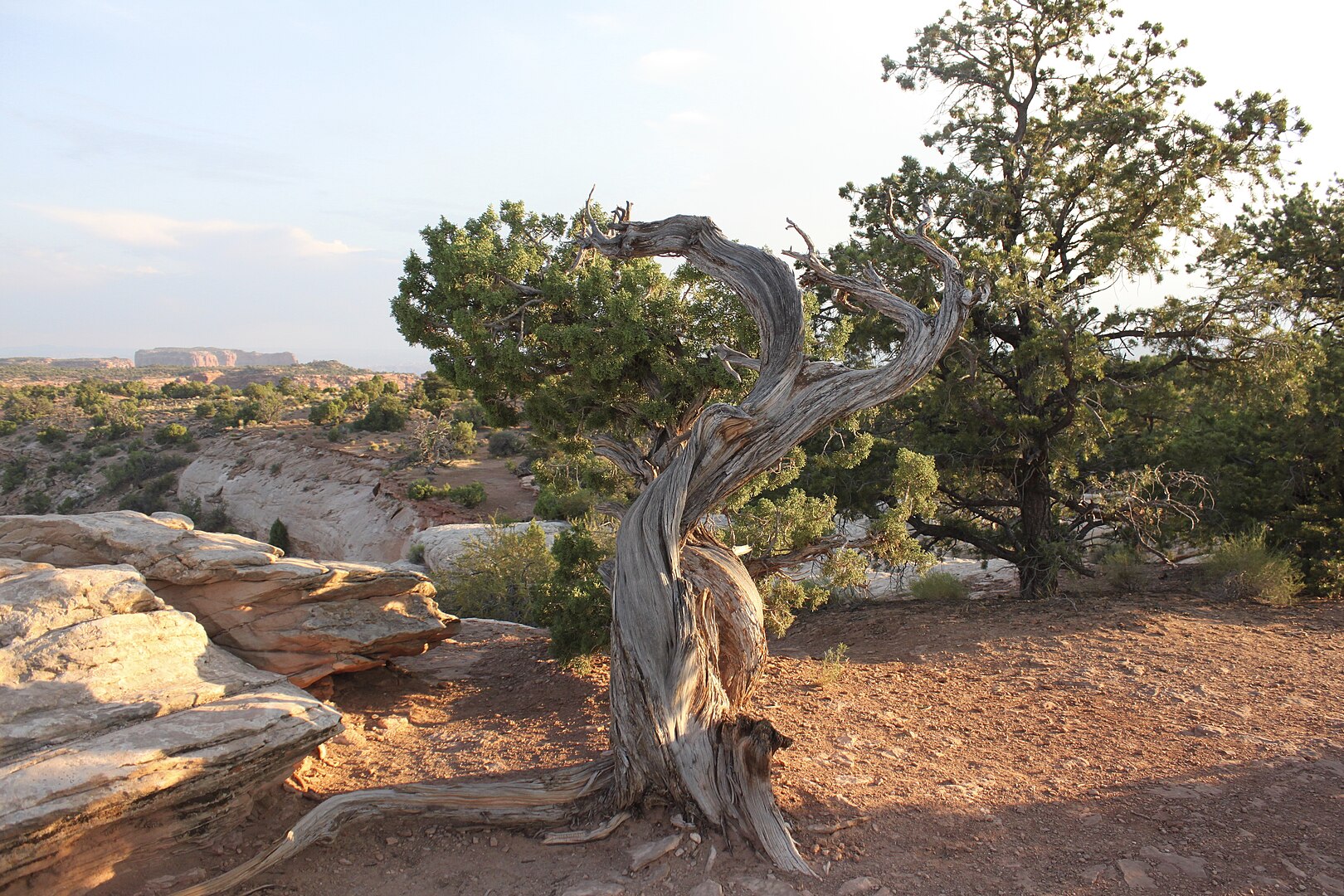
Yearly Climate
Canyonlands is a desert park. It experiences large temperature swings between day and night. Conditions vary widely depending on elevation and season.
Spring (March–May)
-
Day temperatures: 60–80°F
-
Night temperatures: 30–50°F
-
Wildflowers bloom and trails are accessible
-
Popular time for visits
Summer (June–August)
-
Day temperatures often above 100°F
-
Nights can cool to 60°F
-
Shade is scarce
-
Risk of dehydration and heat exhaustion
-
Afternoon storms may bring flash floods
Fall (September–November)
-
Day temperatures: 60–80°F
-
Crisp, cool nights
-
Clear skies and changing colors
-
Another peak season for hiking and camping
Winter (December–February)
-
Daytime highs: 30–50°F
-
Nighttime lows: 0–20°F
-
Snow possible but rare
-
Lower visitor numbers
-
Some trails and roads may be impassable.
Best Time of Year to Visit
Spring and Fall are best.
-
Pleasant temperatures make hiking more comfortable
-
Trails are usually dry and accessible
-
Light is ideal for photography
-
Less crowded than summer months
Summer is possible but requires preparation for heat. Bring more water than expected. Plan hikes for early morning or late afternoon. Seek shade when possible.
Winter brings solitude, crisp air, and quiet beauty. Snow-dusted mesas and frozen washes change the feel of the park. Roads can close unexpectedly.
No matter the season, always check weather conditions before heading out.
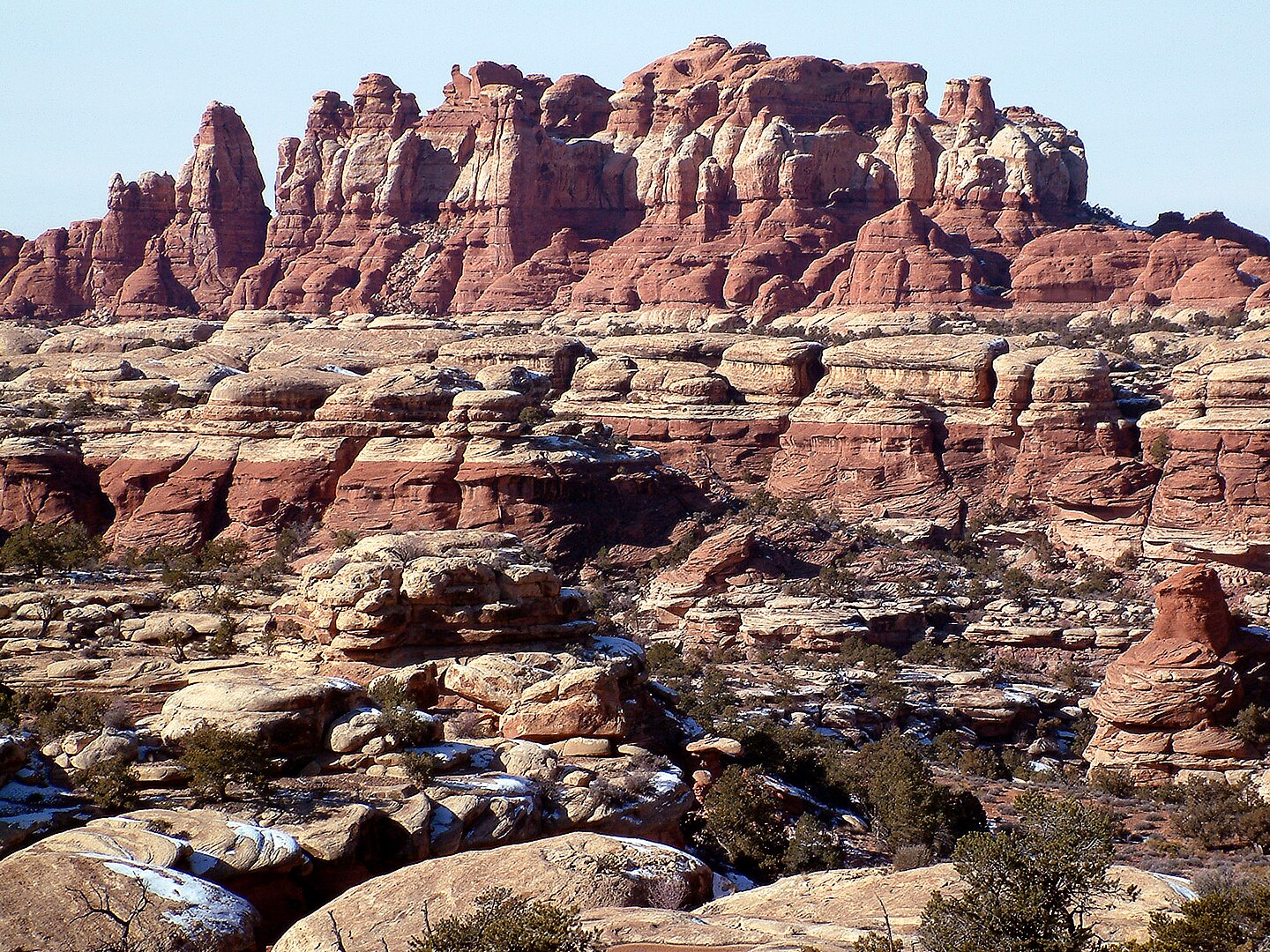
In Summary…
Canyonlands National Park is a rugged, remote, and powerful reminder of Earth’s raw beauty. It’s a place of silence, space, and deep time. It offers challenge, awe, and escape. Whether you stand at Mesa Arch at dawn, paddle between canyon walls, or sit in the shadow of The Needles, the park leaves a lasting impression.
This is not a park to rush. It asks for patience and rewards those who seek stillness. Its grand silence, broken only by wind and water, speaks volumes.

